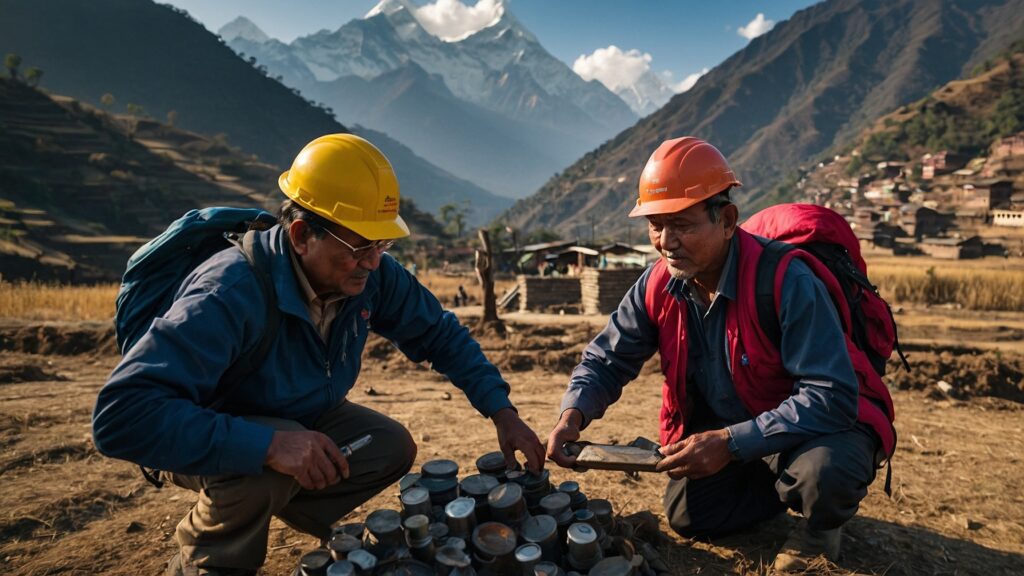The recent development in this tune entails that the Council of Ministers has endorsed the ‘Energy Development Roadmap and Action Plan 2081’. This is one of the most prominent strategies of the Korean power generation industry, which plans to reach a capacity of 28500 MW by the year 2035 from around 3400 MW at present. The approval, which was announced on Tuesday, has been received well by those involved in power production since it allows all types of investment models for big and new projects.
The electricity roadmap established indicates a 10-year plan of action to ramp up generation capacity in Nepal significantly. Minister for Energy, Water Resources, and Irrigation Deepak Khadka also endorsed the plan, saying it has provisions to enable both domestic and foreign investors in hydropower projects. This, he opines, will go a long way towards helping the government to realize the ongoing political campaign of ‘Prosperous Nepal’ through the exploitation of the hydropower sector.
However, it will be imperative that for future development and to meet the project completion timeline drawn in the roadmap, all However, it should be understood that for further development and to meet the project completion timelines mentioned in the roadmap all It’s expected to finish the construction of run-of-river projects within four years, semi-reservoir-based projects within six years, and reservoir-based projects in seven years. The plan also sets a massive plan target of expenditure of USD 46.5 billion (Rs. 6,231 billion) for the further development of the country’s generating and transmitting network.
The roadmap contained here is not just targeted at electricity generation and export; it has specific goals for local use as well. This is out of the planned capacity of 28500 MW; 15000 MW will be exported, and 13500 MW will be used domestically. This balanced approach is aimed at fulfilling the increasing energy demands of the country and, at the same time, placing Nepal as a major electricity supplier to other nations. As part of the plan, there are specific approaches to the development of the appropriate transmission networks and sub-stations, as the above goal indicates.
In addition to that, the roadmap for infrastructure development envisions the construction of 6341 circuit km of 132 kV, 4061 circuit km of 220 kV, and 6440 circuit km of 400 kV transmission lines. These advancements are expected to take the rating of substations to another phenomenal level of 40,000 MVA. The plan also aims to raise per capita electricity consumption to 1,500 units by 2035, enhancing energy access to and the demand for electricity in Nepal.
Multilateral coordination stands as one of the strategies in the vision and strategy map. They have signed a deal that requires them to export power worth 10,000mw to neighboring India within the next ten years. Using fossil energy resources in electricity generation, the plan is to export 5,000 MW to neighboring countries, including Bangladesh, by 2035. This way Nepal has already moved ahead of many other countries, the government of Nepal signed an electricity trade with Government of Bangladesh & exported 40 MW during the monsoon.
In pursuing these ambitious goals, the government of the day uses a host of strategies. Minister Khadka said that the government wanted to adopt a policy that works for reservoir projects and fosters private-sector investment. The investment strategy thus follows the government, private sector, and community investment approaches. For instance, it also envisages mobilizing capital from non-resident Nepalis and Nepalis working in foreign countries, stating that expatriate Nepalis have capacity and developmental potential.
This broad energy strategy plan is a much-needed addition to Nepal’s energy policy framework. When effectively applied, it holds the prospect of making Nepal from an energy-scarce nation to a moderately significant electricity exporter in the region. For the plan to succeed, there has to be proper implementation, consistent political backing, and the capability of sourcing and managing large amounts of investment. While this vision now guides the path that Nepal is about to embark upon, the years to come will dictate how this area of abundance can be made real.


